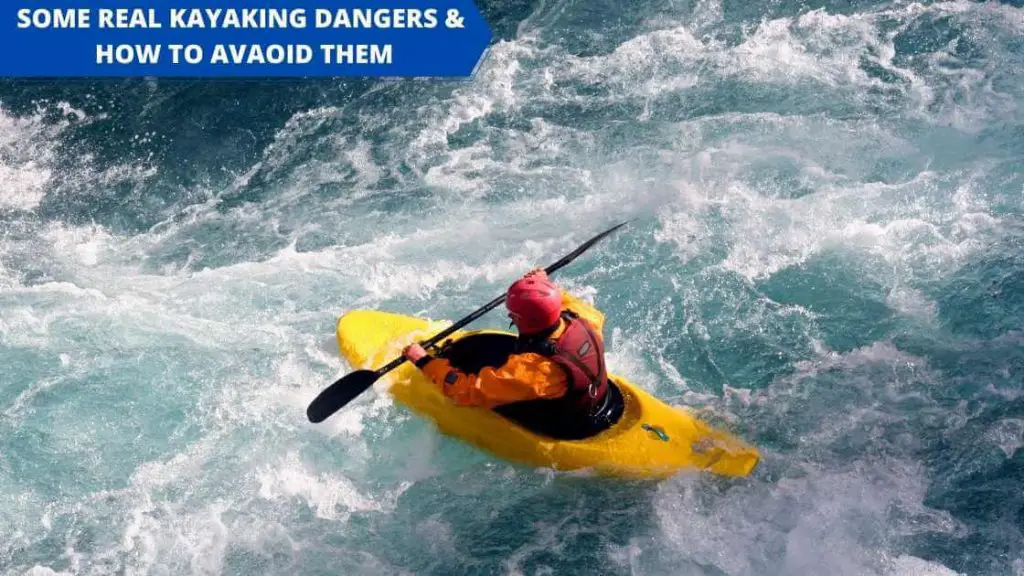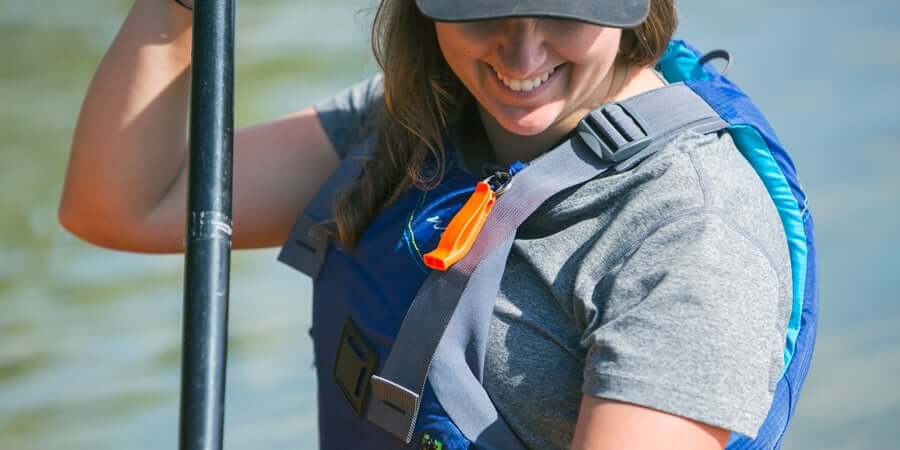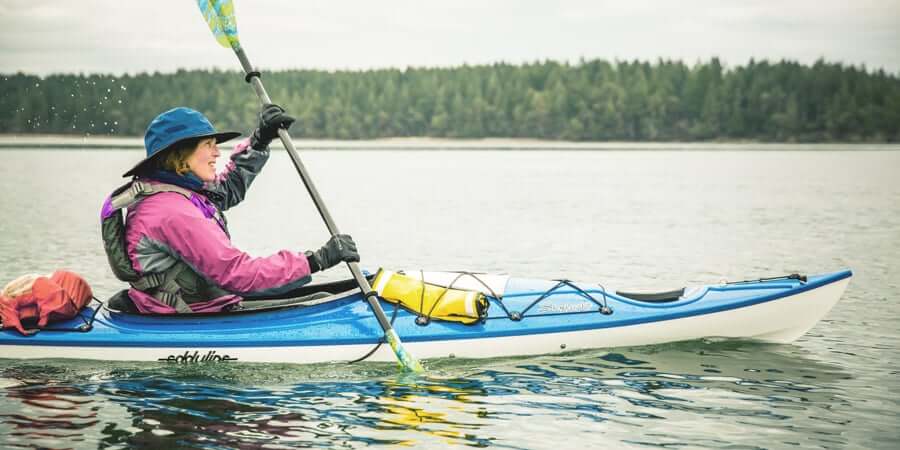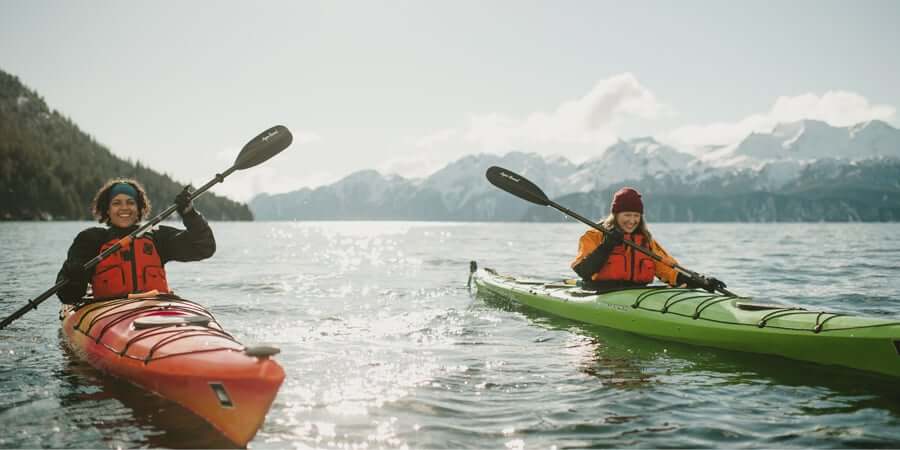Now, first thing first. Is kayaking dangerous? Is kayaking hard? What are the disadvantages of kayaking? Is it safe to kayak? Apart from plenty of kayaking benefits both for physical and mental health, does it include any risk factors? Yes, it can be a dangerous watersport if you do it without essential life-saving gear and proper forethought. But if you have got all of the things with you then no sports can be as exceptional as kayaking.
In addition, there are some people who misapprehend the fact regarding the dangers of kayaking. Some of them freak out just at the thought of doing it and perceive it as fatal. Nonetheless, I have seen many novice kayakers who tend to have the misconception related to safety, and do not even try to give it a second thought just because of the threats that do not even exist.
Correspondingly, in this article, we will discuss some of the most common risk factors and the degree of hazards in this watersports to make your mind clear about the misconceptions that have been roaming inside your mind.
That being said, it holds some innate risk but the purpose of this article is not to scare you but to uplift your courage to plan things, follow the exact route, make safety rules, and some determined decisions when you are out on the water.

REAL RISK VERSUS PERCEIVED RISK
There is really a fine margin between perceived risk and real risk. However, perceptions about real and perceived risk are not always accurate and people often start to anticipate things more dangerous than they really seem. The perceived risk can be explained as to how terrifying something appear to be, whereas a real risk says how horrific that thing genuinely is.
Do You see? if you ask any elder person who has never been abroad ever about how safe the international flights are? Their answers will always be ” terribly dangerous”. But if you question the same thing to a young person who has spent a year or two in foreign, they will ensure you that they are completely safe. Hence, anticipating situations as fearful when they actually ain’t or perceived risk, does not really have anything to do with the real risk involved.
On the contrary, Kayaking on a calm water lake will have the least chance of perceived risk. Also, it involves low actual risk. While on class V rapids the same real risk becomes very high and will have an identical perceived risk comparatively.
The situation often gets worse when you are unable to identify the perceived risk and so as a real risk. Horrible incidents can take place when you think the situation is safe and completely under control but in actuality, it is more than dangerous. Similarly, an anonymous man in Michigan state went missing when he ventured out into the heavily flooded river. That river is frequently quite easy to kayak in and so the perceived risk is seemingly very low. But what people often misinterpret is how drastic a situation can be when the level of the river rises.
The best way to keep yourself safe in kayaking is to know when the risk is actually real. Do not let the situation scare you just because they seem so but respond to them in an appropriate way.
Dangers Of Kayaking And How To Avoid Them
1- Inappropriate Use Of PFD:
The factor that becomes the reason for increasing the chance of real risk or the biggest mistake that makes people exposed to some vulnerable situations is they do not consider wearing life vests significant. This scenario involves people who bring their PFDs ( Personal Floating Device) on kayaks but do not bother to wear them. However, there are a considerable number of people who wear PFDs but the way they put them on is incorrect.

How To Protect Yourself
If there could be a single tip as a safety precaution that would be this: never enter into the water without life jackets because this is the only way you can prevent yourself from potential accidents, injuries and even death can be deterred with this basic advice. Even so, the PFDs should be worn in a way that does not feel too tight or loose but should seem snugly fit.
Check Out: Best PFD For Kayaking
2- Dehydration
The most common real and perceived risk that happens whenever you are out on the water. Dehydration is often a sign of too much exposure to the sun. Knowing the fact that kayaking consumes way more energy and it is inevitably essential to stay hydrated throughout the day. Oftentimes the amount of water you should carry with you is dependent on how long you will be paddling on the water.
How To Protect Yourself
Remember, fatigue, extreme thirst, dizziness, and confusion are all the symptoms of dehydration. Therefore, carry an ample amount of water with you and be sure to drink it on and off while paddling even if you do not feel thirsty still drink water to prevent dehydration.
3- Thunderstorm And Lightning
Kayaking under a thundering sky does not sound fair. You might be on the water when a storm starts. Remember raining on a low scale never harms a kayaker. But if you notice the thunder or lightning start around you, just be quick to get out of the water before you end up getting electrocuted.
How To Protect Yourself
Never choose to kayak in harsh weather where you can’t seem to be helped. Extreme winds and rain can obstruct vision and limit mobility. If you see lightning and clouds turning to dark, be sure to quickly get to the shore as soon as possible.
4- Hypothermia And Cold Shock
It does not make any difference whether the temperature of the water is cold or moderate as long as you are inside your kayak. But instantly when you turn over into the water it can be a drastic experience. Hypothermia and cold shock both happen due to kayaking in cold water. No matter if your surrounding temperature is not very cold but the temperature of the water can be inherently different.
You suffer cold shock when your body strikes the water the first time. Those sudden and extreme changes in temperature can badly affect the body, causing sudden variations in blood pressure, breathing problems, and confusion.
Hypothermia occurs when the body remains exposed to cold temperatures for a longer period. This usually happens when someone submerges in cold water for quite a long time. However, this can also happen when your surrounding’s temperature is cold and you are dressed clumsily. Both situations can hit you drastically if you are kayaking in heavy flooded water.
How To Protect Yourself

Never enter into the water with inadequate dressing. Dry and wet suits ensure your body remains warm in cold temperatures and prevent causing hypothermia and cold shock.
5- Sweepers And Strainers
Sweepers and strainers have often been deadly for many people. Strainers are the stumbling blocks that only permit water to pass through them but no hard object for instance kayaks. Strainers are phenomenal and sometimes can be man-made too like rebar and grate. You are more vulnerable to drowning because the extreme pressure of water might make you trap underwater
While on the other hand, sweepers are the fallen trees from the riverbank but are not completely separated or submerged and often create a hurdle for many paddlers.
How To Protect Yourself
Never try to paddle over and through the strainers or sweepers because it can cost you your soul. Also never opt for paddle alone, having someone by your side ensures to have a joyful kayaking experience but also helps you out when you see yourself trapped by strainers.
6- Undercut Rocks
The unusual formation of rocks underwater are referred to as undercut rocks and often act as a trap for fallen trees and other Detritus to stuck. Nonetheless, the paddlers can become prey for these traps. The situation is more likely to appear in fast-moving whitewater where the vision for underwater is nearly obstructed.
How To Protect Yourself
To prevent yourself from being trapped in undercut rocks. Make sure to be aware of the situation before you get to paddling. Follow the guides, check the source, and never paddle alone. If you notice any stumbling block in your way be quick to get to the shore.
7- Colossal Ships And Other Boats
Apparently, the hull of the kayaks are small and they are often difficult to see. it is not something to consider if you kayak on a small river. But if you are exposed to oceans or big lakes, many big ships, motorboats, and jet skis are likely to run into your kayak if it is foggy around you.
How To Protect Yourself
Having bright lights attached to your kayak is necessary so that you can be seen from farthest in the evening time. While in day time you prevent the risk by wearing bright colors and staying away from the main routes of gigantic ships.
Other Precautionary Measures

Summing Up (Is Kayaking Dangerous)
Kayaking does involve some inherent risks that can turn your beautiful day into an unpredictable nightmare. You just need to follow the kayaking guideline. Take all the precautionary measures and be smart with your choices of where and when to start paddling to prevent risk factors like dehydration, hypothermia, undercut rocks, and hit by big ships. Kayaking on fast-moving rapids is not a good idea but if you are cautious with what you are doing can make all the difference in your kayaking experience.
Moreover, check our guide to Kayaking With Alligators if you get to face them.
Best inflatable kayaks for dogs.
Best inflatable kayaks for whitewater.
Best fishing kayaks under $1000.

Hi, I’m Randy R. Lios and the owner of Floating Kayaks. I’ve always been adventuresome at heart. From the time, I got my first kayak at age 18 until now when I have multiple kayaks with accessories and spend 5-6 hours researching all the new related stuff in the market. I have always been fond of fishing since my childhood and kayaking is part of my weekend routine.
